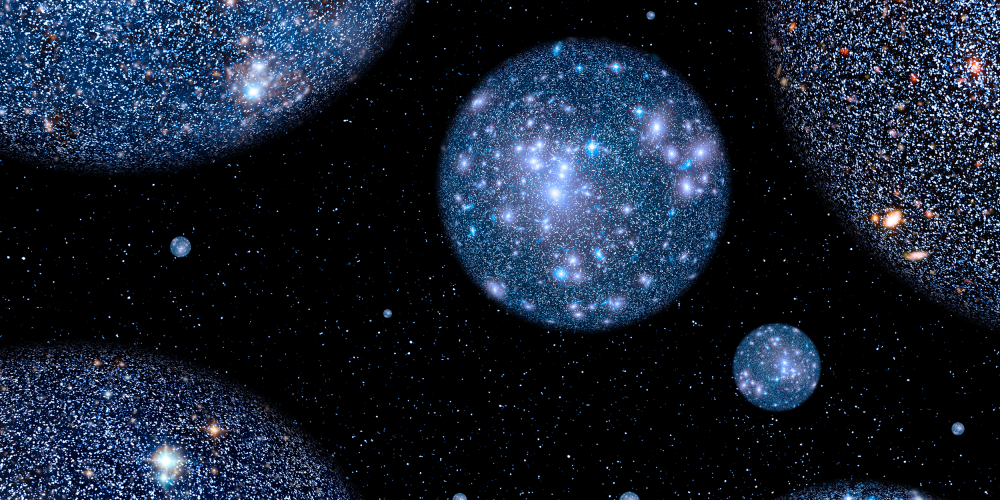
Sci-Fi
Science fiction frequently bends the rules of reality in pursuit of imaginative concepts. While the genre sometimes embraces scientific accuracy, there are many examples of books and films that throw the rules of physics out the door in order to push the plot forward. However, manned expeditions to Mars are increasingly leaving the realm of fiction as the SETI Institute, NASA, and other organizations continue to develop technologies and methodologies needed to explore the Red Planet. Alan Boyle, writing for GeekWire, spoke to Pascal Lee, Planetary Scientist at the SETI Institute, about where realism and fantasy diverge in films such as “the Martian”:
Astronauts could conceivably set up shop on Mars sometime in the next decade or two, and there could be a crewed base on the moon even before that. So, Lee says it’s high time for Hollywood to provide a more accurate picture of how such missions would work.
“We actually have not captured the look of a mission yet,” he told me today at the National Space Society’s International Space Development Conference in Los Angeles.
Lee explains why Martian rovers shouldn’t have sharp angles, the importance of not tracking lunar or Martian dirt inside the rover, and why crewmembers on space missions are unlikely to be young people fresh out of training as is often depicted in films. You can read more about Pascal Lee and his work developing concept vehicles for future rovers to be used on Mars or the Moon on our website, SETI.org.
- GeekWire: Five ‘Martian’ miscues to fix in space flicks
- YouTube: Watch Pascal Lee: Training for Life on Mars on CCTV show Full Frame
- SETI.org: Our Scientists – Pascal Lee
 Pluto’s Surprising Surface
Pluto’s Surprising SurfaceThe New Horizons space probe captured images of what appears to be dunes on the surface of Pluto, baffling planetary scientists who speculated that such windblown features would be impossible due to the very thin atmosphere and, consequently, lack of strong winds. Nevertheless, as Lori Fenton, Planetary Scientist at the SETI Institute told the Christian Science Monitor, encountering the unexpected is a key feature of planetary science:
“We’re forced to think outside the box when we see these strange worlds,” Fenton says. “It’s the reason I study planetary science, because we’re always seeing new things that are completely out of the range of what we would expect.”
According to a recently published article in the journal Science that proposed an explanation for the dunes, a possible mechanism for the creation of the dunes is sublimation: in short, the sunlight that reaches Pluto’s surface, which is made of a mixture of nitrogen and methane ice, may be enough to cause nitrogen to sublimate (turn immediately from a solid into a gas). The nitrogen sublimates at lower temperatures than methane, so it’s possible the rising gas is enough to shift the particles of methane enough for thermal winds to redistribute the surface into dunes. Dr. Fenton cautions that this explanation is only one possibility, however, and further analysis of distant Pluto is needed:
“That’s the funny thing about images of other worlds’ surfaces,” says Lori Fenton, a planetary scientist at the SETI Institute in Mountain View, Calif. “We take these images and it’s really hard to interpret what we see, so we try to apply what we know from Earth and what we’ve explored and confirmed on other worlds. So, they’re sort of testing a hypothesis there, and they’ve got some evidence that supports it. But until we go back to Pluto, we won’t know for sure.”
Dr. Fenton also maintains a blog in which she posts and describes starkly beautiful images of the Martian Surface. You can find out more about Lori Fenton’s work studying the effects of winds on planetary surfaces on our website, SETI.org.
- Christian Science Monitor: Pluto Dune Mystery Challenges Scientists' Frame of Reference
- Cosmic Diary: Lori Fenton's Blog
- SETI.org: Scientist Interview - Lori Fenton
 Across the Multiverse: New Study Explores the Possibility of Life in another Cosmos
Across the Multiverse: New Study Explores the Possibility of Life in another CosmosThe Monthly Notices of the Royal Astronomical Society recently published a paper suggesting that aliens may exist in parallel universes. Advances in physics have led some scientists to speculate that our universe is part of a vast “multiverse”, a nearly incomprehensible number of parallel universes. The research focused on the strength of dark energy, a force that causes the universe we call home to expand more quickly over the course of time. It's possible that variations in the amount of dark energy could lead to differences in the formation of stars and planets, and that our unique universe is special in its suitability for the existence of life. But as SETI Institute Senior Astronomer Seth Shostak told NBC News, the new research points to another possibility:
It sounds as if having just the right amount of dark energy is crucial for making universes that could beget life. But that doesn't seem to be the case. Using computer models, the research team found they could vary the strength of dark energy from zero to several hundred times its value in our universe, and everything remained copacetic. Dark energy didn't need to be any particular strength for galaxies and stars to form.
This would imply that life could indeed develop in a universe with a different value of dark energy. However, as Shostak notes, “even the existence of parallel universes is unproven”, so the search remains limited to our own lively universe.
- NBC News: Could alien life exist in parallel universes?
- Monthly Notices of the Royal Astronomical Society: The impact of dark energy on galaxy formation. What does the future of our Universe hold?
 AstroReality: J.R. Skok on App That Lets You Hold the World in Your Hands
AstroReality: J.R. Skok on App That Lets You Hold the World in Your HandsSETI Institute Planetary Scientist J.R. Skok is the science advisor for AstroReality, a company that has produced an AI and AR enabled model of planet Earth. The physical model, carved with minute detail, is enhanced with an app that allows users to explore the past, present, and possible future of our world through augmented visualizations and artificial intelligence offering voice-activated navigation through a wide breadth of planetary knowledge. Space.com covered some details of the project and noted that the project has far exceeded its initial Kickstarter goal.
SETI Institute CEO Bill Diamond interviewed Dr. Skok about his work with AstroReality in a recent episode of Facebook Live, which airs weekly on the SETI Institute’s Facebook page.
- Space.com: AstroReality's Earth Augmented Reality Project Blows Past Fundraising Goal
- Facebook: Facebook Live with J.R. Skok
- YouTube: AstroReality
 SETI Institute CEO Bill Diamond on Freakonomics Radio
SETI Institute CEO Bill Diamond on Freakonomics RadioNPR broadcasted a recent episode of Freakonomics Radio featuring Bill Diamond, CEO of the SETI Institute, discussing what it is that sets humans apart from other animals on the planet:
I believe it is our curiosity, and specifically the curiosity of the why and the how, that is the essence of our humanity and separates us from all other species on this planet.
You can listen or view the transcript on Freakonomics.com, or check your local NPR station’s schedule for times to hear the broadcast over the radio.
- Freakonomics Radio: The Invisible Paw
 CA Teacher and Participant in SETI Institute’s NASA Airborne Astronomy Ambassador Program Recognized for STEM Engagement
CA Teacher and Participant in SETI Institute’s NASA Airborne Astronomy Ambassador Program Recognized for STEM EngagementA high school teacher in Manteca, California was named the Albert Brochhini Memorial STEM Teacher of the Year. Larry Grimes teaches biology and astronomy at Sierra High School, and is chairman of the school’s science department. He was one of a handful of educators selected to fly on NASA’s Stratospheric Observatory for Infrared Astronomy (SOFIA) through the SETI Institute’s Airborne Astronomy Ambassador Program. The program is a professional development program that allows high school physics and astronomy teachers to experience astronomy first-hand on the world’s largest flying telescope.
- You can read more about the NASA Airborne Astronomy Ambassador Program on our website, SETI.org.
- The Record: Sierra High educator, senior named STEM teacher, student of the year
- SETI.org: NASA Airborne Astronomy Ambassador Program Status
Last week’s episode featured an encore of Your Brain’s Reins, looking at technology addiction, neuroscience in the courtroom, and the power of the unconscious.
Last week’s Facebook Live presented a conversation on astrobiology research and the next generation of Mars rover missions with SETI Institute scientists, Pablo Sobron. Our previous episode featured CEO Bill Diamond talking with SETI Institute scientist J.R. Skok about AstroReality, which uses AR and AI to create interactive models of the Earth and Moon.
Videos of all past Facebook Live events can be found on our Facebook page: https://www.facebook.com/SETIInstitute/
- SkeptiCal Con: June 10, Berkeley, CA Seth Shostak to speak
- The Drake Award: June 14, Menlo Park, CA Victoria S. Meadows will be presented with the SETI Institute’s Drake Award and speak about her work
- Alien Con 2018: June 15-17, Pasadena, CA Seth Shostak to speak
- Astrobiology Australasia Conference 2018: June 25-26, Rotorua, New Zealand Seth Shostak to speak
- Spacefest IX: July 5-8, Tucson, AZ Seth Shostak will be a featured speaker
- 14th Quadrennial Solar-Terrestrial Physics Symposium: July 9-13, Toronto, Canada Meng Jin, SETI Institute Research Scientist is one of the invited speakers
- COSPAR 2018: July 14-22, Pasadena, CA Seth Shostak to present “Red Dwarf Star Survey with the ATA”
- International Astronomical Union: August 20-31, Vienna, Austria Franck Marchis, SETI Institute Senior Scientist will speak about adaptive optics and the Unistellar eVscope





